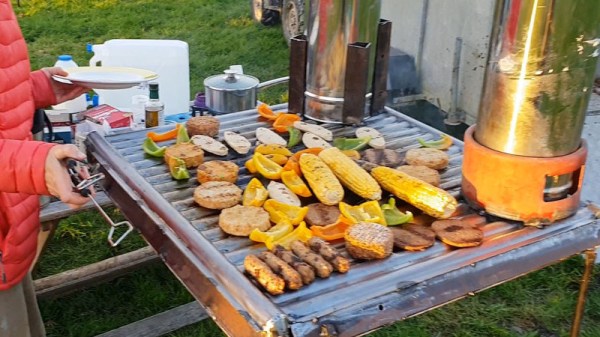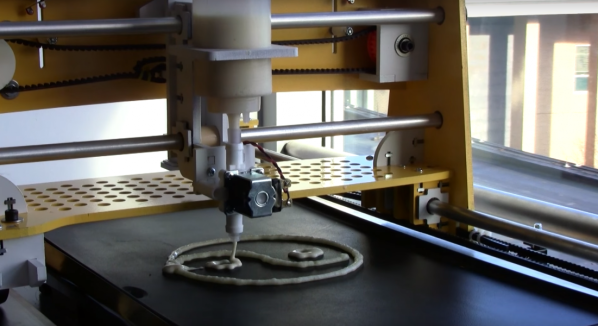If you search the web, you will learn that humans began to cook their food with fire a long time ago. Indeed, you might expect that there would be nothing new in the world of flame-based cookery. Fortunately [Bongodrummer] didn’t get that particular memo, because he’s created a rather unusual rocket stove griddle that is capable of cooking a significant quantity of food.
A rocket stove is designed to achieve as efficient use of energy as possible by achieving the most complete burn of high surface area fuel. It features a small combustion area and a chimney with supplementary air feed to ensure that exhaust gasses also burn. This one feeds all those hot gasses directly to the griddle, before taking them away up a pair of flues. As an added bonus there is a dome attachment for a pizza oven, made when a previous project had some left-over building material. Take a look at the comprehensive build video below the break.
Perhaps alarmingly the combustion chamber and chimney are made from a gas cylinder, but the use of a central heating radiator for the griddle is an extremely good idea. A vortex air inlet at the bottom and a secondary air injector further up the chimney complete the unit, making for a worthy replacement for a traditional barbecue.
It’s worth saying, this isn’t the first rocket stove we’ve seen, there was this simple design as well as this very well engineered space heater.















